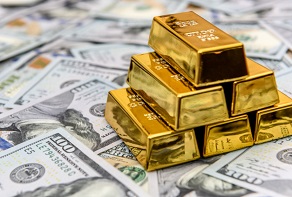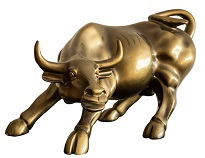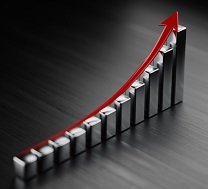Precious Metals News

The Wall Street Journal: Gold Demand Climbs as Investors Seek Safe Havens, WGC Says
"The outlook for gold remains optimistic, as continued U.S. dollar weakness, lower interest-rate expectations, and the threat of stagflation could further propel investment demand."

Barron's: Gold's Rally Reflects the U.S. Deficit. Neither Is Ending Soon
"We're seeing substantial asset inflation away from the dollar, as people are looking for ways to effectively de-dollarize, or derisk their portfolios vis-a-vis U.S. sovereign risk!"

Bloomberg News: Gold Hits Fresh Record on Fed Rate-Cut Hopes as Silver Surges
Investors have also been seeking safety in precious metals to protect themselves from the threats posed by runaway budget deficits - a phenomenon known as the "debasement trade."

Business Insider: Why Investors Are Flocking to Silver and Platinum, Not Just Gold
The shift has fueled an unprecedented wave of gold buying by global central banks - a signal that the appetite for real, unencumbered assets is now structural, not speculative.

Fortune: At This Rate, the Price of Gold Could Soar to $10,000 Per Ounce in Just Three Years
"We are now aiming for $5,000 in 2026," Yardeni added. "If it continues on its current path, it could reach $10,000 before the end of the decade."

Fox Business: National Debt Surpasses $38 Trillion Milestone for First Time in US History as Spending Surges
Milestone reached just two months after hitting $37T, with deficits projected to soar even higher. The annual budget deficits are expected to rise to about $2.6 trillion in 2035.

Investing Live: In This Market, Just "Buy Shiny Stuff": SocGen
"It's easier to spell out a bearish case for the dollar than a bullish one for anything else." The firm's latest forecast is for gold to hit $5,000 by the end of 2026.

Investing.com: BofA Says Gold Rally Not Extreme, Next Target $5,000 by 2026
The bank continues to endorse a "60:20:20" portfolio (60% equities, 20% bonds, and 20% gold), arguing the shift "would have delivered higher returns since 2020."

Market Place: A Shortage of Silver Has Prices for the Precious Metal Surging
Used in nearly everything with an on-and-off switch, global demand for silver has been outstripping supply since 2020.

Market Watch: Bank of America Now Sees $65 Silver, as Price Spike Reduces London Market to a 'State of Seizure.'
The so called "debasement trade" has created intense demand for precious metals as investors have flocked to stores of value, hedges against dollar weakness and inflation and diversification away from fiat currencies.
-
CNBC: Ray Dalio Says Today is Like the Early 1970s And Investors Should Hold More Gold Than Usual
-
Finbold: 'Rich Dad' R. Kiyosaki Reveals Where to Invest $100 Right Now
-
Forbes: Silver To Skyrocket: Retail Investors Drive Precious Metals to New Heights
-
Fortune: Gold's Price Record is Driven by the 'Debasement Trade,' China, And Fear of An AI Bubble, Analysts Say
-
Investing.com: Gold Eyes $4,000 Record, Silver Surges Towards $50 Milestone. Silver is making an equally impressive push toward $50/oz.
-
Investopedia: Gold Is Pricier Than Ever. Here's Why Experts See It Rising Even Higher
-
Market Watch: Billionaire Ken Griffin Warns on Consequences of Gold's Rally as Goldman Targets Nearly $5,000
-
Market Watch: When the World's Largest Asset Manager And the 'Bond King' Both Agree - Run to Gold, Silver and Bitcoin
-
Market Watch: Why This Veteran Investor Sees Gold Hitting $7,000 By the End of Trump's Term
-
Silver Academy: Francis Hunt Calls For $330 Silver
-
The Wall Street Journal: Silver Hits Historic $50 Mark as Investors Rush to Safety
-
CNBC: DoubleLine's Jeffrey Gundlach Believes Holding a 25% Gold Position isn't Excessive
-
CNBC: Ray Dalio Says Gold, Non-fiat Currencies Will Be Stronger Stores of Value As U.S. Debt Mounts
-
Reuters: Ray Dalio Suggests Gold as Shield for US Markets at Risk of Heart Attack
-
The Washington Examiner: Gold Prices Soar, Outperforming Stock Market Amid Economic Uncertainty
-
Fox Business: US Debt Tops $37 Trillion And the 'Big, Beautiful Bill' Allows it to Rise Trillions Higher
-
New York Post: Gold Smashes $3,500 Record as Rate-cut Bets, Policy Turmoil Fuel Haven Rush
-
Portfolio Adviser: Why Gold Will Continue to Shine
-
The Street: Here's How Gold Prices Can Reach $5,000
-
Ainvest: Peter Schiff Warns US Dollar Faces Imminent Collapse Amid BRICS Rise
-
Bloomberg News: China's Central Bank Adds Gold in Nine-Month Buying Streak
-
CNBC: Gold Regains Its Luster as Market Worries About a Pullback in Stocks
-
Forbes: Gold's Rally Was No Surprise - And It's Not Done
-
Fox Business: US National Debt Hits Record $37 Trillion
-
Investing.com: Ray Dalio Warns of Fiat Trust Breakdown, Says Gold Standard Return is Possible
-
USA Today: Uncertain Economic Times? That Means it's Gold's Time to Shine
-
Barron's: David Rosenberg: July Jobs Report 'Had a Recession Label All Over It.'
-
Benzinga: Gold Revaluation: Nuclear Option America Might Pull Again
-
Benzinga: Silver's Supply Crunch Sparks Bull Case: Report
-
Bloomberg News: Fidelity Says $4,000 Gold Possible as Fed Cuts, Dollar Drops
-
Business Today: Gold Hit Record High; Silver's Bull Run Yet to Start: Report
-
Investing Haven: How Shifting Debt Levels Are Driving Gold and Silver Prices
-
Barron's: Why Gold Could Hit $4,000
-
Bitcoin.com News: Is Silver Set to Explode? Predictions Target $50 Price Tag by Year's End
-
Bloomberg News: Central Banks Fret More Over FX 'Weaponization,' UBS Survey Says
-
Bloomberg News: China's PBOC Keeps Buying Gold as Reserves Grow For Eighth Month
-
CNBC: America's Deficit Reckoning - How the U.S. Debt Spiral Could Spark a Crisis
-
Forbes: Central Banks Buy 20 Tons of Gold in May, Says World Gold Council
-
Investing.com: Silver's Breakout Rally is Slowly Unfolding
-
Barron's: Gold and Silver Have Cooled. Why It's Time to Buy
-
Fortune: Gold Prices Should Hit $4,000 as U.S. Deficits May Overshadow the Israel-Iran Conflict, BofA Says